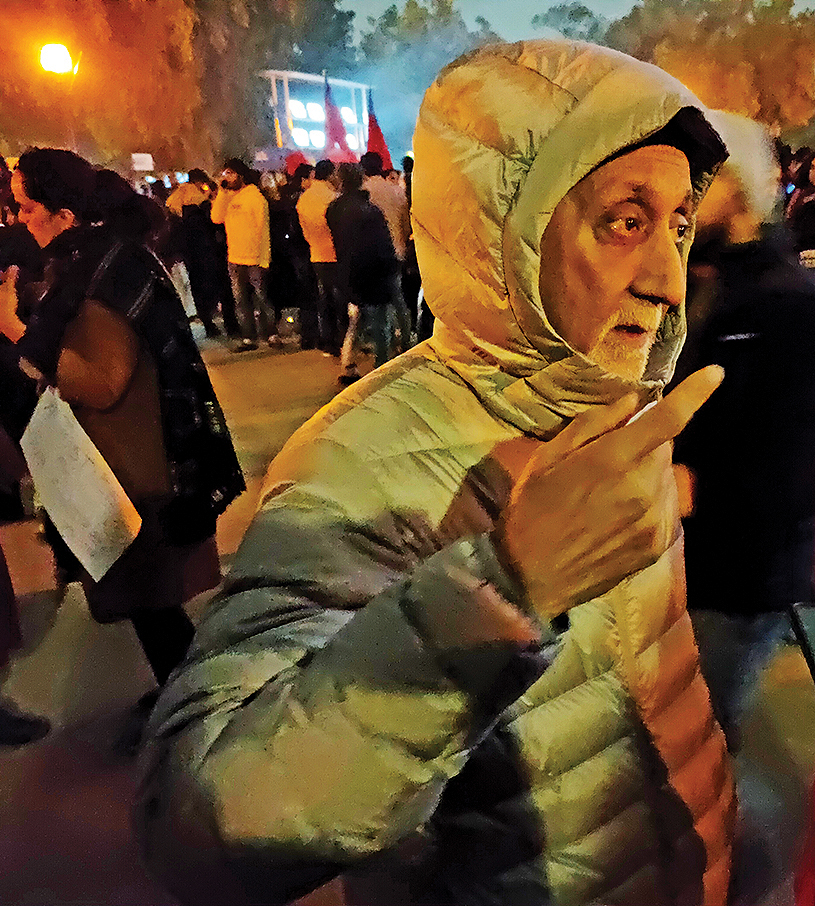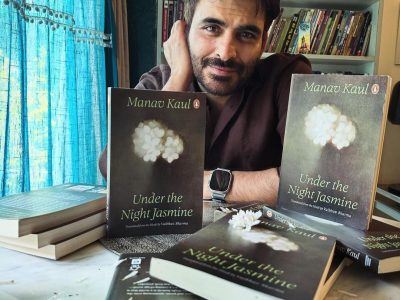Many of them have memories of the Emergency and they don’t want to see it playing out again
“The Emergency then was not as bad as this, an undeclared one. They are creating a wall between people. I don’t know what they think.”
Ghayasuddin, 70, stands shoulder-to-shoulder with youths and students in the biting cold outside Delhi’s India Gate, part of a crowd protesting the Citizenship Amendment Act and the heavy-handedness of the police on students of the Jamia Millia Islamia University and Aligarh Muslim University on December 15.
For the last two days, students from central universities and colleges across the country have congregated in solidarity with their peers. In Delhi, the protests were punctuated with violence; in Delhi University, protesters clashed with the police and members of the Akhil Bharatiya Vidyarthi Parishad. An all-India protest against the Act is planned on December 19.
But it isn’t just students and young people taking to the streets — the older generation is right beside them.
Ghayasuddin, for example, was in an auto rickshaw on Monday night when he saw the protest at India Gate. He asked the driver to stop so he could join the crowd.
“These kids are intelligent,” he says. “They have spoken out and we have come to support them. I am feeling very good here.”
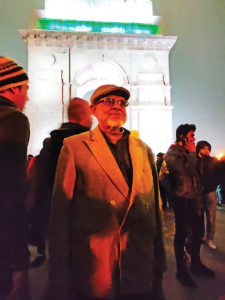
Ghayasuddin says he’s been raising his voice against the Citizenship Amendment Act ever since the Bill was passed in the Lok Sabha on December 9. He’s outraged at the level of police brutality at Jamia Millia Islamia University. ““Have you ever seen the entry of police into a university without the permission of the vice chancellor?” he asks. “The kids were in their hostel, they were in the library studying. What they did was wrong.”
He adds: “I am worried about the children’s future, which is not looking good to us. Our kids study and we spend money on their education but if their future isn’t bright, where will they go?” He believes the Bharatiya Janata Party government “wants to destroy the country and divide its people, creating a wall of hatred”.
Ghayasuddin graduated from Kirori Mal College, Delhi, in 1968. When he was young, he says, no one knew, or cared, about the differences between Hindus and Muslims. “I went to people’s homes where I would offer my namaz inside their temple rooms, and it was perfectly normal,” he says. “But now, I feel things have changed in the past five or six years. We don’t get called over for Diwali often, nor do they come to ours for Eid.” His face is stamped with dismay.
He says he finds “hope” in the youth. “Look around, this is the first time in my life I’m hearing such slogans here at India Gate, that Hindu Musalmaan bhai-bhai. I am very happy.”
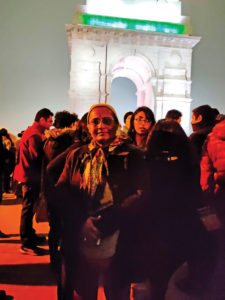
Ghayasuddin believes the media plays a role in spreading hatred. “It’s like the Emergency. where they can only speak what the government allows.”
Achin Vanaik, who is in his late 60s, agrees. Another attendee at the India Gate protest, Vanaik says there’s a “nexus” between the government and the management of media houses. “The result is the Indian media is not the media of the past, where there was a much better diversity in news and a much greater reflection of secular truths.”
During the Emergency, Vanaik says, the role of the media was very different. “What has happened now is that there is much more mediatisation of politics. They now have a much stronger influence than before in shaping people’s thinking.” He also thinks the current political scenario is graver than at the time of the Emergency. “We are talking about a force that has a long-term hegemony,” he says, and this authority has great support from the majority “which is opposite to the Emergency”.
Vanaik says the government has singled out students “day by day, through a sustained campaign”. He cites Jawaharlal Nehru University and the rhetoric against the institution to prove his point. Yet, he says, this isn’t close to brutality meted out to the students of Aligarh Muslim University and Jamia Millia Islamia.
Visibly angry, he asks, “Since Independence, have you ever seen a government marching students out with their hands up in the air as if they are criminals?”
***
On December 15, when the Delhi police forced their way into the Jamia Millia Islamia campus, dozens of students were injured. One of them was a BA student whose mother, Nagma (name changed), was also part of the protest at the university.
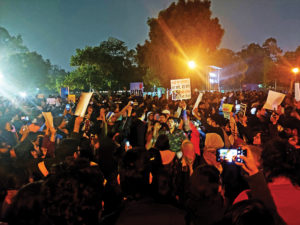
“It all happened in front of my eyes,” she says. “I was myself trapped in the university. I was in the library with the children who were studying there.”
Standing at India Gate, with banners reading “Abhi nahi toh kabhi nahi (It’s now or never)” and “Yeh Hindustan sabka hain (This Hindustan is everyone’s)”, Nagma says she’s anguished over what unfolded at Jamia Millia Islamia. While she says she refuses to believe the students participated in stone-pelting or arson attacks, her husband calls it a “pre-planned attack” on the students.
Nagma and her husband have been protesting every day since the Bill was passed, but the events of Sunday has left them shaken.
Nagma was at Jamia Millia Islamia from 1 pm on Sunday, standing with the crowd on the road. At 5-5.30 pm, she says, things turned ugly. Nagma ran inside the buildings for cover as a barrage of teargas shells broke out over the protesters.
“It was complete horror inside,” she says. “They switched off the lights and we stood in complete silence in the fear that if they heard us speak, they may find us. But their firing continued and they went after children even in the bathrooms.”
Nagma raises her fist, clearly agitated, and accuses the government of being unwilling to support education. “They don’t want poor people’s children to get an education. They want those who are crushed to remain crushed. An uneducated government is in power and they have a problem with education. Attacking the students means you are attacking India. They have attacked this country.”
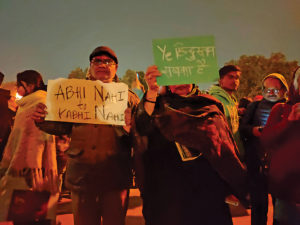
Standing nearby, Suman Keshari says her children have graduated from college. But this shouldn’t stop parents from joining in and raising slogans, she says, since the issue is bigger than just students agitating against police brutality inflicted on their peers.
“It’s very important for us to come out and support the cause,” Keshari says. “Because the issue here is not the universities but the protection of our Constitution, our citizenship, and protecting our country. We can’t allow our country to be divided on religious grounds once again.”
Keshari, a poet in her 60s, was part of Sunday’s protest at the Delhi police headquarters. She says it’s important to stand up now, since accepting the Citizenship Amendment Act would be to “go against the Constitution itself”.
She points at the crowd and smiles. “I am here to stand with the youth, they are our future. How can I not stand in support of our future?”

